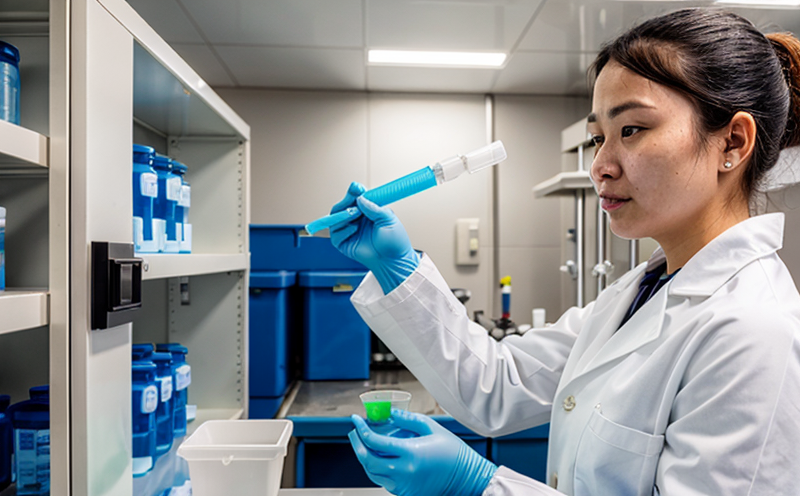USP Bioindicator Testing for Sterilization Validation
The USP Bioindicator Testing for Sterilization Validation is a critical component of ensuring the integrity and safety of medical devices, pharmaceutical products, and other sterile goods. This testing procedure is designed to demonstrate that sterilization processes are effective in destroying all viable microorganisms present on or within materials before they reach consumers.
In the pharmaceutical industry, where product purity and patient safety are paramount, ensuring sterility through rigorous validation processes is non-negotiable. USP Bioindicators serve as a surrogate for spores, which are among the most resistant forms of microorganisms to thermal sterilization methods such as autoclaving or dry heat.
The process begins with the preparation of the test specimen, typically a bioindicator strip containing spore-forming organisms. These strips are exposed to the sterilization cycle under controlled conditions, then incubated for an extended period to allow any remaining viable spores to germinate and form colonies. The presence or absence of these colonies directly indicates whether the sterilization process was effective.
The USP Bioindicator Testing aligns with international standards such as USP guidelines, which emphasize the importance of bioindicators in validating the efficacy of sterilization processes. Compliance with these standards is crucial for manufacturers seeking to meet regulatory requirements and ensure product quality.
The methodology involves several key steps:
- Selection of appropriate USP bioindicator strips
- Placement of indicators in the sterilization chamber during processing
- Post-sterilization incubation to observe any spore germination
- Documentation and reporting of results according to specified criteria
This testing ensures that each batch meets stringent quality standards, thereby protecting public health. It is particularly important for products with extended shelf lives or those used in sterile environments such as hospitals and pharmacies.
By adhering to USP bioindicator testing protocols, manufacturers can demonstrate compliance with regulatory requirements and provide assurance of product safety and efficacy. This service plays a vital role in the pharmaceutical sector by maintaining high standards of quality control throughout the manufacturing process.
Scope and Methodology
The scope of USP Bioindicator Testing for Sterilization Validation is comprehensive, encompassing both procedural aspects and compliance with international standards. This testing ensures that sterilization processes are effective in eliminating all viable microorganisms present on or within materials.
The methodology involves the use of bioindicators—surrogates for spores—that undergo a defined sterilization cycle. After exposure to the sterilization process, these indicators are incubated under conditions suitable for spore germination and colony formation. The presence or absence of colonies provides conclusive evidence regarding the effectiveness of the sterilization method.
The testing procedure is meticulously outlined in USP guidelines, which provide detailed instructions on bioindicator selection, placement within the sterilization chamber, post-sterilization incubation periods, and interpretation of results. Compliance with these standards ensures that all steps are performed consistently across batches, thus maintaining process reliability.
The methodology also includes quality control measures to ensure accuracy and reproducibility. This involves regular calibration of equipment, standard operating procedures (SOPs), and strict adherence to time and temperature parameters specified in the USP monographs.
Industry Applications
The application of USP Bioindicator Testing for Sterilization Validation spans various sectors, including pharmaceuticals, medical device manufacturing, food processing, and biotechnology. In these industries, ensuring sterility is essential to prevent contamination and safeguard public health.
In the pharmaceutical industry, this testing method is critical for validating sterilization processes used in producing injectable drugs, ointments, and other products that must maintain their sterile state until administration. The effectiveness of these processes directly impacts patient safety, making rigorous validation a non-negotiable requirement.
For medical device manufacturers, USP Bioindicator Testing is vital for ensuring the sterility of implants, surgical instruments, and other devices used in healthcare settings. Compliance with this testing ensures that devices remain free from microorganisms throughout their lifecycle, reducing the risk of infections and complications.
The food industry also benefits from USP Bioindicator Testing to verify the effectiveness of sterilization processes employed during manufacturing or packaging. This helps prevent contamination and extends product shelf life by ensuring that all viable spores are eliminated before distribution.
In biotechnology, where cell cultures and recombinant proteins are sensitive to microbial contamination, this testing method is used to validate sterilization procedures for reagents, equipment, and facilities. Maintaining a sterile environment in these environments ensures the integrity of experimental results and product quality.
Quality and Reliability Assurance
- Consistent Results: Strict adherence to USP guidelines ensures consistent and reliable test outcomes, providing confidence in the sterilization process.
- Regulatory Compliance: This testing method aligns with international standards such as USP, ensuring compliance with regulatory requirements.
- Patient Safety: By validating that sterilization processes are effective, this service helps protect public health and ensure product safety.
- Product Integrity: Maintaining the sterility of pharmaceuticals and medical devices throughout their lifecycle is crucial for preserving product integrity.





